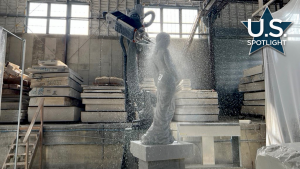The pace of change in the development of new materials has been accelerating for at least a couple of decades. Even people who make it a point to keep themselves informed find themselves falling behind
The pace of change in the development of new materials has been accelerating for at least a couple of decades. Even people who make it a point to keep themselves informed find themselves falling behind.
While all kinds of construction materials have changed, nowhere has the change been bigger or faster than in cement and concrete.
You just get acclimated to the changes that polymer chemistry brought to the concrete industry and nanotechnology begins to creep into the conversation.
You get used to reading about genetically modified food and then, all of a sudden, you read about that kind of bioengineering applied to repairing cracked concrete.
It seems that a team of students at a British university has used genetic modification to develop a way to repair fine cracks. Their achievement holds the promise of prolonged life for concrete structures and a reduction impact that they will have on the environment over the life of the structures.
Ever hear of Bacillus subtilis? Most of us haven’t.
Apparently it’s a bacterium commonly found in most soils. But the students from the University of Newcastle, tweaked its genetic properties and turned it into an amazing little thing that’s at the heart of what the students are calling BacillaFilla.
It’s not a product yet, but it might become one two or three years down the road.
The nine students, from half a dozen academic disciplines, have performed a neat trick.
They’ve genetically modified bacteria that grow only when they come in contact with concrete.
Then they “swim” down fine cracks in the concrete and produce a mixture of calcium carbonate and a bacterial glue to “knit” the concrete back together.
As the bacteria grow, they produce three types of cells. One type produces crystals of calcium carbonate; one develops filament-like cells that serve as reinforcing fibres, and the third produces glue that acts as a binding agent and fills the gap.
Ultimately, the repair cures to the same strength as the surrounding concrete.
The students built a safeguard into BacillaFilla: It only germinates when in contact with concrete — triggered by the material’s pH. And it has a built-in self-destruct gene so it wouldn’t be able to survive should it escape into environment at large.
The calcium carbonate produced expands at the same rate as concrete, making it an ideal filler material.
The B. subtilis filaments have a tensile strength similar to the synthetic fibres used in fibre-reinforced concrete.
The student’s backgrounds include computer science, civil engineering, bioinformatics, microbiology and biochemistry.
Cement and concrete have a bad environmental reputation. Globally, their manufacture accounts for about five per cent of all man-made carbon dioxide emissions. Extending building life will spread those emissions over a longer life cycle, with the result that a building’s carbon footprint would be smaller.
While BacillaFilla could be used just about anywhere, one thinks immediately of the damage done by earthquakes, often resulting in the razing of many buildings that could be repaired. It would also be useful in the maintenance and repair of heritage buildings, and also for extending the life of public infrastructure.
The nine British students won an international gold medal for their work.
The idea of the competition was to get together a team of students from a variety of backgrounds to design and genetically engineer a bacterium to do something novel and useful. More than 130 teams entered, which means a lot of good young minds are working in the field.
That should mean we can look forward to more innovative ideas and products making their way to market. It’s going to be fun to watch.
Korky Koroluk is a regular freelance contributor to the Journal of Commerce. Send comments or questions to editor@journalofcommerce.com











Recent Comments
comments for this post are closed